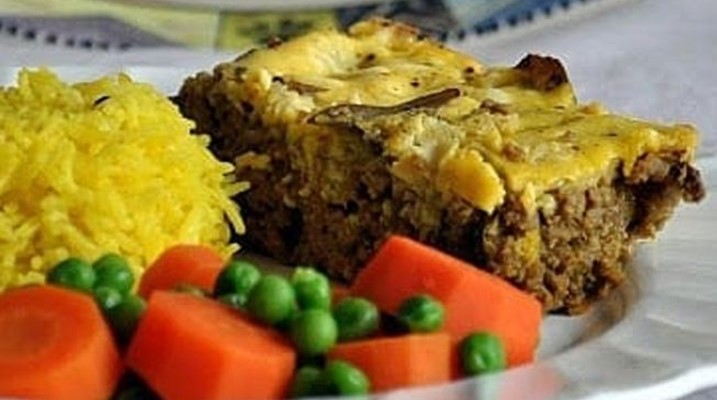In the vibrant culinary landscape of South Africa, few dishes capture the essence of fusion cuisine as beautifully as Cape Malay Bobotie. This iconic dish is a testament to the country’s rich history, combining African and Malay flavors into a harmonious and unique culinary experience. With its aromatic spices, tender meat, and indulgent custard topping, Bobotie has become a beloved favorite both locally and internationally.
The origins of Cape Malay Bobotie can be traced back to the Cape Malay community, which emerged during the 17th century when slaves from the Indonesian archipelago and Malaysia were brought to South Africa by Dutch colonists. These slaves brought with them their culinary traditions, which fused with local African ingredients and techniques over time.
At its core, Bobotie is a savory meat dish typically made with ground beef or lamb, although other meats like chicken or ostrich can also be used. The meat is combined with a medley of spices, including curry powder, turmeric, cumin, coriander, and cinnamon, which lend the dish its distinctive aromatic profile. The spices are gently fried with onions, garlic, and ginger, creating a fragrant base for the meat mixture.
To enhance the flavors, additional ingredients such as dried fruit (such as apricots or raisins), chutney, and vinegar are added. These ingredients provide a delicate balance of sweetness and tanginess that complements the savory meat. Chutney, in particular, is a staple condiment in Cape Malay cuisine, adding a unique twist to the dish.
Once the meat mixture is cooked and seasoned to perfection, it is transferred to a baking dish and topped with a custard-like mixture made from beaten eggs and milk. The custard is lightly seasoned with bay leaves, which infuse the dish with a subtle herbal note. As the Bobotie bakes in the oven, the custard sets and forms a golden brown crust, adding a rich and creamy texture to the dish.
Cape Malay Bobotie is often served with yellow rice, a fragrant rice dish flavored with turmeric and spices, and a variety of condiments such as sambals (a type of relish) and chutneys. The combination of flavors and textures creates a harmonious symphony on the palate, with each bite delivering a delightful blend of sweetness, spiciness, and richness.
Beyond its tantalizing taste, Bobotie holds cultural significance in South Africa. It has become a symbol of unity and diversity, representing the blending of different cultures and traditions in the country’s history. The dish is commonly enjoyed at social gatherings and is a centerpiece during festive occasions, such as weddings and religious celebrations.
Bobotie’s popularity has transcended borders, with food enthusiasts from around the world embracing its unique flavors. It has found its way onto the menus of international restaurants and has become a favorite among adventurous home cooks seeking to explore new tastes and experiences.
In conclusion, Cape Malay Bobotie stands as a culinary testament to the fusion of African and Malay flavors in South Africa. This iconic dish showcases the harmonious marriage of aromatic spices, tender meat, and creamy custard, resulting in a tantalizing sensory experience. Whether enjoyed in a Cape Malay home or at a fine dining establishment, Bobotie continues to captivate palates and tell the story of South Africa’s diverse and vibrant culinary heritage.








